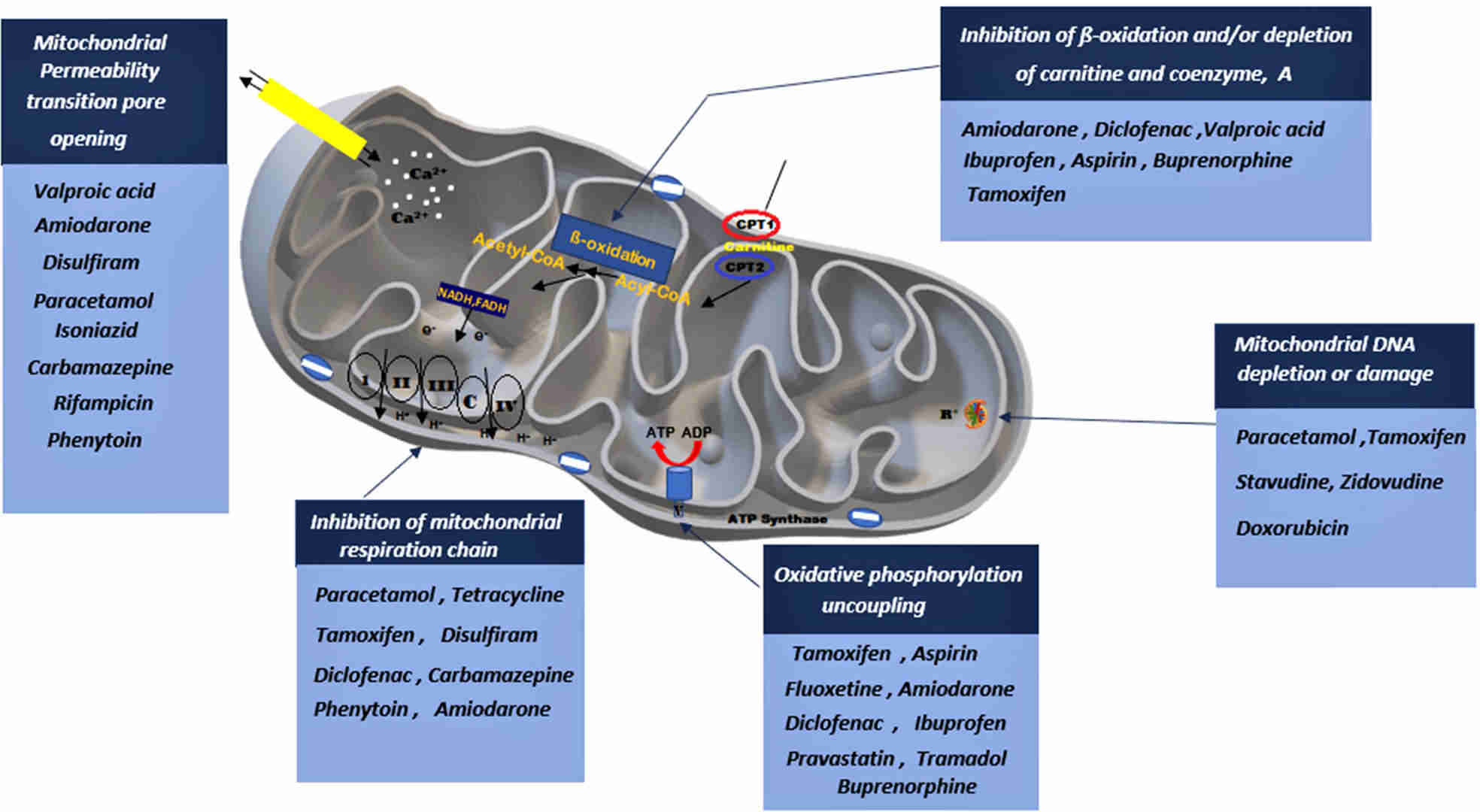Mitochondria are double membrane bound organelles that are vital for life and responsible for most of the energy (ATP) production in the cell. They are often referred to as the "powerhouse of the cell" due to their key function in oxidative phosphorylation (OXPHOS). In the mitochondria, the majority of ATP in the cell is produced through the electron transport chain (ETC).
Beyond energy production, mitochondria are critical hubs for:
- Metabolic Integration: Facilitate important catabolic reactions such as the Tricarboxylic Acid (TCA) cycle and β-oxidation of fatty acids.
- Signaling Hub: Regulating intracellular calcium homeostasis and serving as a key checkpoint for apoptosis initiation.
- Redox Control: Site of production and a key regulator of Reactive Oxygen Species (ROS).
- Genetic Autonomy: Housing their own circular DNA (mtDNA), necessitating dedicated enzymes like DNA polymerase γ and mitochondrial RNA polymerase for replication and transcription.
Mitochondrial Toxicity in Drug Development
Mitochondrial toxicity occurs when a compound disrupts the normal function or structure of the mitochondria. Given the indispensable roles of mitochondria, even subtle disruption can lead to severe and sometimes fatal adverse effects, particularly in high-energy-demand organs like the liver (hepatotoxicity), heart (cardiotoxicity), kidney (nephrotoxicity), and muscle.
Drug induced mitochondrial toxicity has been the cause of attrition in late-stage drug development as well as drug withdrawals in the post-market setting. Identifying mitochondrial liabilities early during drug development is critical to mitigate development risk and ensure patient safety. Our Mitochondrial Toxicity Service offers a comprehensive, mechanism-based evaluation to characterize mitochondrial impairment, integrating structural, functional, and mechanistic endpoints to guide compound optimization and safety decision-making.
 Fig. 1. A depiction on how various drug classes can potentially lead to mitochondrial impairment through interfering with various mitochondrial sites (Kuretu A, Arineitwe C, et al., 2023).
Fig. 1. A depiction on how various drug classes can potentially lead to mitochondrial impairment through interfering with various mitochondrial sites (Kuretu A, Arineitwe C, et al., 2023).
Mitochondrial Toxicity Assays
Mitochondrial Membrane Integrity and Potential
The mitochondrial membrane potential (ΔΨm) is an established indicator of mitochondrial health that is also a major driving force for ATP production. By measuring ΔΨm dynamics (using fluorometric dyes (TMRM, JC-1, rhodamine 123) and live-cell microscopy), we can detect early signs of mitochondrial depolarization or dysfunction.
Oxidative Stress Assessment
Mitochondria are a primary source of reactive oxygen species (ROS). We measure compound-induced oxidative stress through fluorogenic probes and biochemical assays to detect superoxide production and glutathione depletion, providing insight into redox imbalance and potential oxidative damage.
Mitochondrial respiration / OCR
Measure the oxygen consumption rate (OCR) and extracellular acidification rate (ECAR) using extracellular flux analyzers (i.e. Seahorse XF). With the addition of a stress test (basal, ATP‐linked, maximal, spare respiratory capacity), you can dissect mitochondrial function under basal vs. stressed states.
Mechanistic Cell Death Pathway Analysis
Utilize high-content imaging and flow cytometry with validated markers such as caspase activation and membrane permeability to differentiate key modes of compound-induced cell death including apoptosis, necrosis, and pyroptosis.
In addition to these standard functional assays, we also offer evaluations of mitophagy and autophagy, mtDNA damage and repair, ROS quantification, and high-content imaging of mitochondrial morphology and dynamics. These complementary approaches will help you to gain deeper mechanistic insights into compound-induced mitochondrial responses.
Why Choose Our Mitochondrial Toxicity Service?
- Comprehensive expertise: Experienced scientists specialized in mitochondrial biology and drug safety assessment.
- Flexible study design: Customizable assay panels tailored to your compound and study objectives.
- Advanced technologies: Seahorse XF bioenergetic profiling, high-content imaging, and molecular quantification platforms.
- Mechanistic insight: Integrated data interpretation linking mitochondrial dysfunction to cellular outcomes.
Partner with us to de-risk your drug development pipeline through robust, mechanistic mitochondrial safety assessment and data-driven decision support.
Reference
- Kuretu A, Arineitwe C, et al. Drug-induced mitochondrial toxicity: Risks of developing glucose handling impairments. Front Endocrinol (Lausanne). 2023. 14:1123928.
- Neurotoxicity Service
- Phototoxicity Testing Services
- Cytotoxicity Testing Services
- Cardiotoxicity Testing Services
- Hepatotoxicity Testing Services
- Nephrotoxicity Testing Services
- Genetoxicity Testing Services